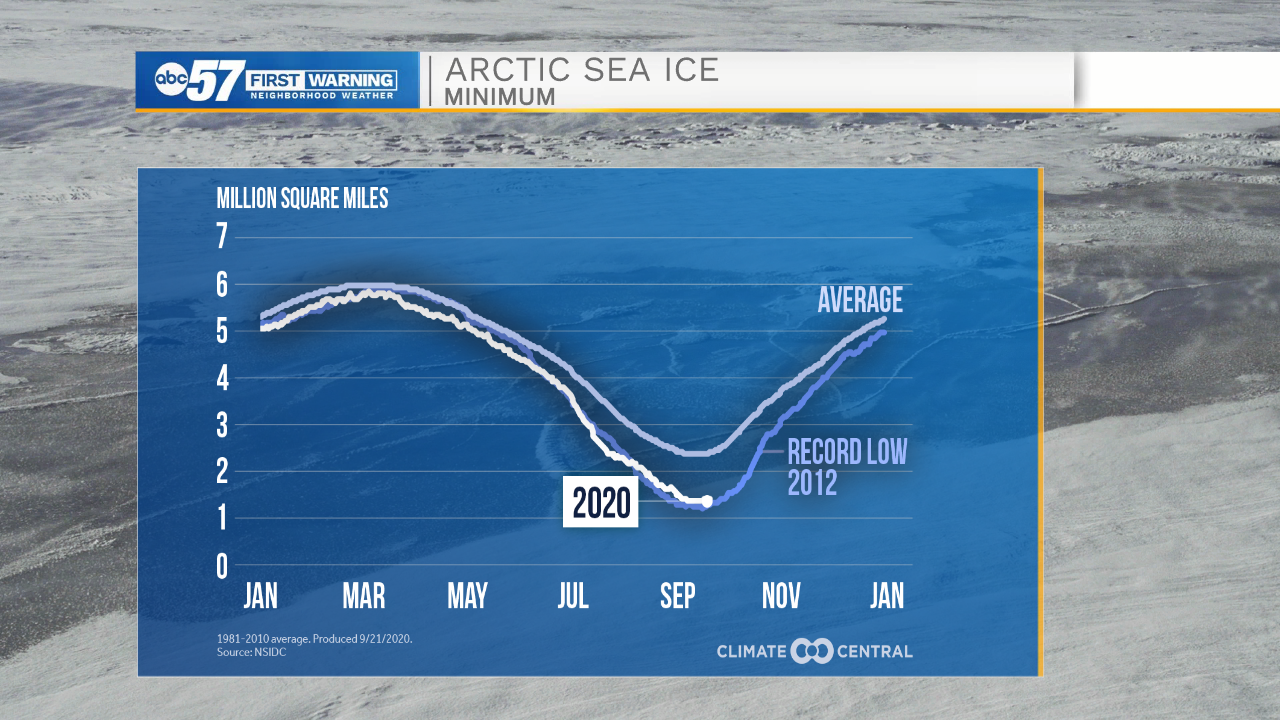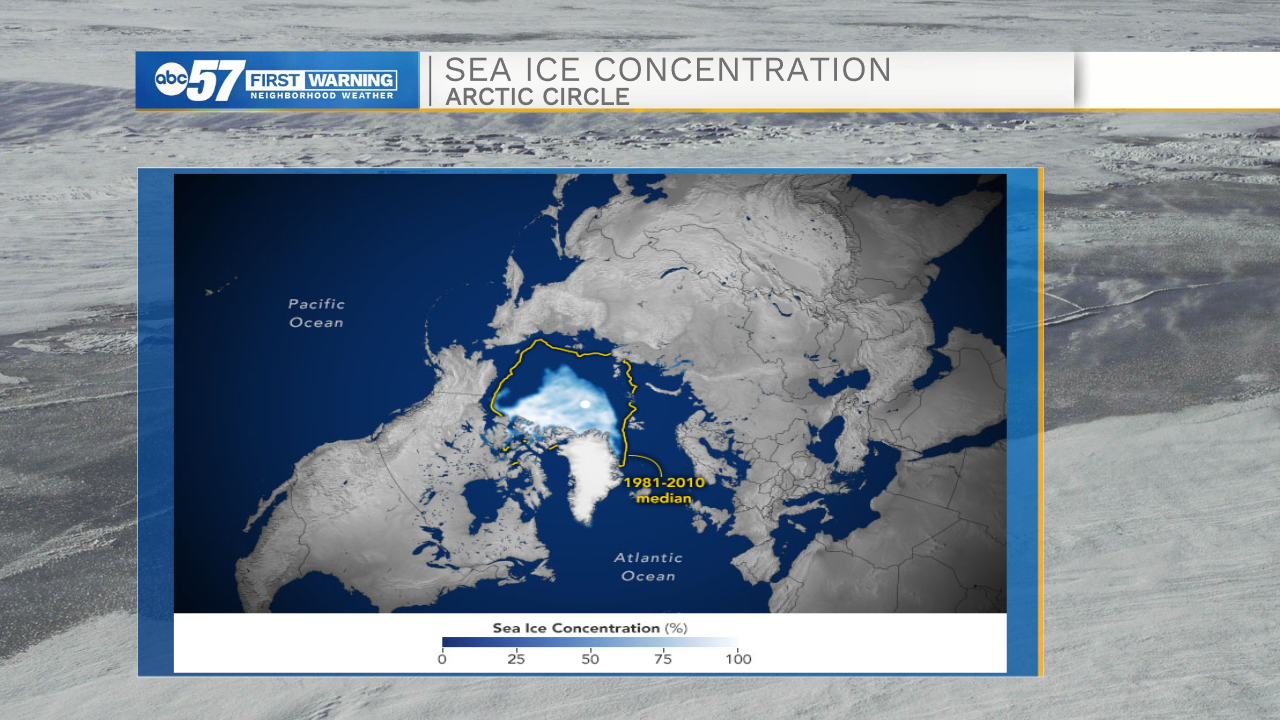
-
2:11

Small town, big heart: Kewanna launches first Once Upon a December...
-
1:19

Author Ivan Maisel visits South Bend to spotlight legendary Frank...
-
1:47

Dangerously cold overnight
-
0:26

Shop with a cop brings Christmas joy
-
1:46

Person of interest released after Brown University shooting
-
1:47

Snow wraps up today, but cold remains through start of week
-
3:29

Fernado Mendoza becomes first Heisman winner in IU history
-
2:08

Community says its farewell to Jaworski’s Market
-
2:23

Snowy and cold now, and getting colder
-
1:50

Dealing with frigidly cold and snowy weather this weekend
-
1:33

State Senator Blake Doriot speaks on why he voted “no“ for...
-
3:13

Community says farewell to Jaworski’s Market
The effects of a historically hot summer are showing up all across the globe, including in the Arctic.
Arctic sea ice has reached its minimum extent for the year. According to the National Snow and Ice Data Center, the 2020 sea ice minimum is the second lowest in the 42-year satellite record.
With Arctic sea ice reaching its second-lowest extent, a long-term downward trend continues. https://t.co/qUgFDQ8vRR pic.twitter.com/QyOdIy4Sjj
— NASA Earth (@NASAEarth) September 23, 2020
The sea ice melted early this year thanks to a Siberian heat wave that sent temperatures in the Arctic nearly 20 degrees above average.

The 2020 Arctic sea ice minimum is nearly 1,000,000 square miles below the 30 year average.

Melting sea ice contributes to what climate scientists refer to as the "heat spiral"

When sea ice melts, it exposes more open ocean to sunlight. The darker ocean absorbs more heat, which increases global temperatures and in turn leads to more sea ice melting.

